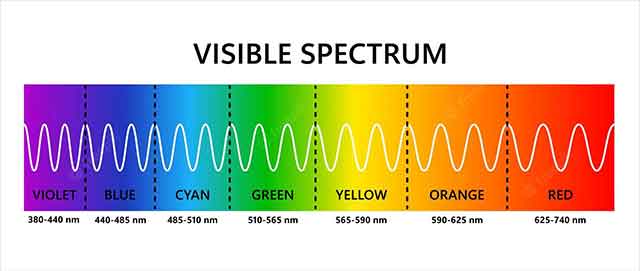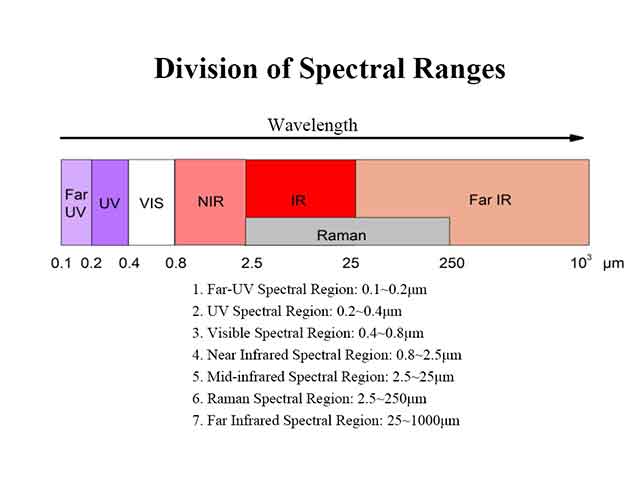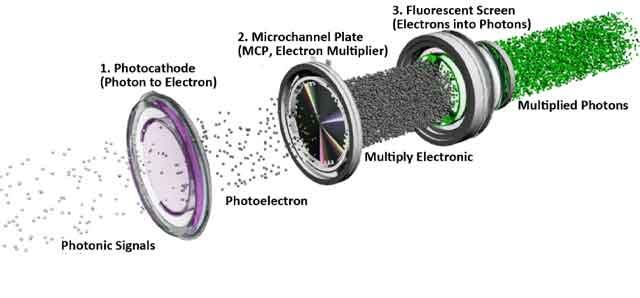The Working Principle of IR Night Vision
2022-08-02
Contact Engineer manager
Engineer Manager Name: Jacky
WhatsApp/ Wechat: 0086-18792456795
Email: mh_elec@126.com or jacky@mh-elec.com
Infrared night vision instrument is a military night vision instrument using photoelectric conversion technology. It is divided into active and passive two types: the former with infrared searchlight irradiation target, receive reflected infrared radiation to form an image; The latter does not emit infrared rays, but relies on the infrared radiation of the target itself to form a "thermal image", so it is also called a "thermal imager". The infrared night vision devices on the market are all active. Passive infrared night vision devices are generally not called night vision devices, are renamed thermal imagers.
A. History of IR Night Vision
Although people discovered infrared light very early, the development of infrared remote sensing technology was very slow due to the limitation of infrared components. It was not until 1940 that Germany developed lead sulfide and several infrared transmitting materials that the birth of infrared remote sensing instruments became possible. Since then, Germany has taken the lead in developing a variety of infrared detection instruments such as active infrared night vision devices.
The active infrared night vision device has the characteristics of clear imaging and simple production, but its fatal weakness is that the infrared light of the infrared searchlight will be detected by the enemy's infrared detection device. In the 1960s, the United States first developed a passive thermal imager, which does not emit infrared light, is not easy to be discovered by the enemy, and has the ability to observe through fog and rain.
B. Classification of IR Night Vision
a. Classified by Image Intensifier Tube Algebra
The most important indicator of the infrared night vision device is the algebra of the image intensifier tube. In theory, the higher the algebra, the farther and clearer the observation distance. It can be divided into Gen1, Gen2, Gen3, Gen4.
b. Classification by Observation Eyepiece
It can be divided into single tube, double tube.
C. Working Principle of IR Night Vision
Night vision can be done in two different ways, depending on the technology it uses. Image Intensifier Technology: This technology works by collecting light of weak energy, including light in the lower part of the infrared spectrum. The technology then amplifies the collected light until we can easily observe the image. Thermal Imaging Technology: This technology works by capturing light at the high end of the infrared spectrum. All objects give off this light as heat. Hot objects (such as warm objects) emit more of this light than cold objects (such as trees or buildings). As mentioned above, both types of night vision devices work using infrared light, which is what we'll discuss next.
To better understand night vision, you must have a certain understanding of light. The amount of energy in light depends on the wavelength of the light: the shorter the wavelength, the higher the energy. In visible light, ultraviolet has the highest energy and infrared has the lowest energy. Immediately adjacent to the red side of the visible spectrum is the infrared spectrum.

Infrared light can be separated into 3 components.
Near-infrared light: Near-infrared light is the closest to visible light, and its wavelength range is 0.7 to 1.3 microns.
Mid-infrared light: The wavelength range of mid-infrared light is 1.3 to 3 microns. Mid- and near-infrared light is widely used in electronic devices, including remote controls.
Thermal infrared light: Thermal infrared light is the largest part of the infrared spectrum, and its wavelength range is 3-30 microns.

The motion of atoms is perpetual, they vibrate, move and spin constantly, even the atoms that make up the chair are constantly moving. Atoms can be excited in different states, in other words, they can have different energies. If we apply a lot of energy to an atom, the atom can break away from its so-called ground state energy level and move to an excited energy level above the ground state. The degree of excitation depends on how much energy is acting on the atoms in the form of heat, light or electricity.
All living things need energy, in addition to this, many non-living things like engines, rockets, etc. also need energy. The consumption of energy generates heat, which causes atoms in an excited state to emit photons. This photon is a form of light that belongs to the thermal infrared spectrum. Image intensifier technology is considered by most to be night vision. Image intensifier systems are often referred to as "night vision devices". Night vision devices work by relying on a special tube, the so-called image intensifier tube, which is used to collect and amplify infrared and visible light. Here is an introduction to the working principle of image intensifier technology:

(1) A common lens like an objective lens collects ambient light and some near-infrared light.
(2) The collected light is sent to the image intensifier tube. In most night vision devices, the image intensifier tubes are powered by two or more batteries.
(3) In image intensifier tubes, photocathode waves are used to convert photons of light energy into electrons.
(4) Atoms in the image intensifier tube release similar electrons as they pass through the tube, and multiply the original number of electrons by thousands of times using MCPs (microchannel plates) in the tube. When electrons from the photocathode hit the first metal electrode of the MCP, they are suddenly accelerated in the glass microchannel by a voltage of 5000 volts across the metal electrode pair.
(5) At the end of the image intensifier tube, the electrons hit a phosphor-coated screen. These electrons maintain the position they were in as they passed through the channel, and since they remain in the same alignment as the original photons, they project a perfect image on the screen.
(6) The green phosphor image is viewed through another lens eyepiece, which allows you to zoom in and focus the image. Night vision goggles may be attached to electronic displays like monitors, or viewed directly through eyepieces.
The original purpose of night vision goggles was to locate the enemy at night. It is still widely used by the military, not only for this purpose, but also for navigation, surveillance and sighting purposes. Police and other security services often use thermal imaging and image enhancement, especially for surveillance.
Contact Engineer manager
Engineer Manager Name: Jacky
WhatsApp/ Wechat: 0086-18792456795
Email: mh_elec@126.com or jacky@mh-elec.com
 tel
tel


